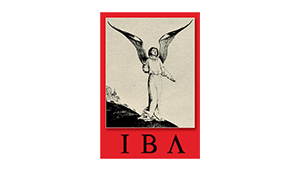From the Naxos Blog: Cláudio Santoro: Symphonies 5 and 7
October 28, 2022Cláudio Santoro features significantly in the Naxos Music of Brazil series, which is a joint undertaking with Brazil’s Ministry of Foreign Affairs to promote music by Brazilian composers in an extensive series of new albums. Santoro (1919–89) wrote fourteen symphonies, all of which feature on the project’s release schedule and represent the most significant set of works in the genre ever composed in Brazil. This blog visits Symphonies Nos. 5 and 7 that were released in March of this year; our next blog in November will feature Symphonies Nos. 11 and 12, slated for release that month.
Born in Manaus, Santoro’s career began in 1940 when he composed his Sonata for Solo Violin, the first work written by a Brazilian composer to use twelve-tone technique. That same year he composed his First Symphony, which met with the approval of the German musician (and his teacher) Hans-Joachim Koellreutter, leader of the ‘Música Viva’ movement that promoted new directions in which to take Brazilian music.
In the late 1940s, however, Santoro’s music took a radical turn. This was as a result of his political and ideological convictions and his role as the Brazilian delegate to the 1948 Prague Congress of Progressive Composers, whose final manifesto urged composers to avoid excessive subjectivity and look to their national folk traditions for inspiration.
The works Santoro wrote during the 1950s were influenced by his search for a style that communicated more immediately with an audience, achieving this by using nationalist elements. During that decade, he composed four symphonies, of which the Fifth and Seventh were the most imposing in scale.
Composed in 1955, the Fifth Symphony premiered the following year in Rio de Janeiro with Santoro himself conducting. Although it draws on folk-based material, his way of using this material is very different from the solutions employed by other composers at the time, in that he applies a more abstract approach, rather than clearly referencing folk melodies and forms.
The first movement, for example, is built on the Lydian-Mixolydian mode, typically used in the folk music of northeastern Brazil, thus recreating the atmosphere without actually referencing any recognisable melodies. Here are the closing minutes of that movement.
The second movement, which acts as the scherzo, is a lively, colourful dance that uses an array of typical Brazilian percussion instruments, as demonstrated in this short extract.
The slow movement that follows is a theme and variations based on the Xangô chant, which forms part of the Afro-Brazilian candomblé religious rites that grew from the African diaspora. Such material had previously been drawn on by major Brazilian composers such as Heitor Villa-Lobos and Francisco Paulo Mignone, the latter using it in one of the movements of his 1933 ballet Maracatú de Chico Rei. This is a very rare example of the direct use of folk material in Santoro’s work generally. As mentioned in regard to the first movement of the symphony, he tends to employ it in more abstract fashion, eliminating direct references to traditional Brazilian elements.
Here’s the opening of the movement that presents the initial variations before introducing a rhythmic ostinato of an indigenous character that gradually acquires the role of a second theme.
Santoro uses minimal resources to craft the finale. It’s constructed on a single theme, heard at the outset, that undergoes constant changes in harmonisation interspersed with powerful orchestral unison passages. We join the movement in the approach to the dazzling coda where lively string writing leads to a closing restatement of the principal theme as a brass chorale.
The other recording on this recent release is of Santoro’s Seventh Symphony, the work which effectively brought the composer’s ’nationalist’ decade to an end. Written in London in 1959, it was Santoro’s entry in a competition sponsored by Brazil’s Ministry of Education and Culture to commemorate the completion of the construction of the country’s new capital, Brasília, which was to be officially inaugurated the following year.
The Seventh is one of the longest and most complex of all Santoro’s symphonies. It was also one of the composer’s own favourite works and seems to reflect the importance the city went on to have for him in the following decades (more of which in our next blog on his Eleventh and Twelfth Symphonies). Although the symphony is not programmatic as such, its intensity does reflect the historic moment at which it was composed and the visions of modernity associated with a new capital city.
The first movement is again monothematic, built on a four-note motif stated by the strings in the slow opening section. We join the movement at the start of the following Allegro section, when the same motif is declaimed by the horns, setting in motion a vigorous episode in which growing blocks of sound are built on rhythmic ostinatos, while contrasting sections make use of the same four-note motif in lyrical passages from the woodwind and strings.
The slow movement that follows is again constructed on minimal thematic material and unfolds in the relaxed manner indicated by the score’s ‘quasi recitativo’ marking. Here’s the opening section.
The third movement scherzo recalls the character of that in the Fifth Symphony, although the structure is a little more complex. Once again, however, Santoro uses a four-note motif for his overall template. Having just returned from a break writing this blog to take a quick walk around my local park, I found myself surrounded by a symphony of wonderful birdsongs, mostly structured in 4-note calls. Perhaps it’s true, as they say, that ’less is more’. Here’s the opening of the movement, up to the point where Santoro introduces a contrasting repeated-note theme presented by the trumpet.
Although the finale is again based on a four-note motif, the whole mood of the movement represents a significant shift in style. Its astringency has been interpreted as representing the notions of the cutting-edge modernity that had inspired the building of Brasilia. The opening of the movement clearly demonstrates this.
The Seventh Symphony was premiered in 1964 in Berlin, with Santoro himself conducting the Berlin Radio Symphony Orchestra. In the short space of time since its composition, however, Santoro had already experienced a series of events that would have a profound impact on his music, such as the building of the Berlin Wall, the founding of the University of Brasília, where he established the music department in 1962, and the military coup in Brazil in early 1964. By that point, his music—perhaps as foreshadowed in the finale of the Seventh Symphony—was already heading in new directions. We pick up the trail in our next blog.






























